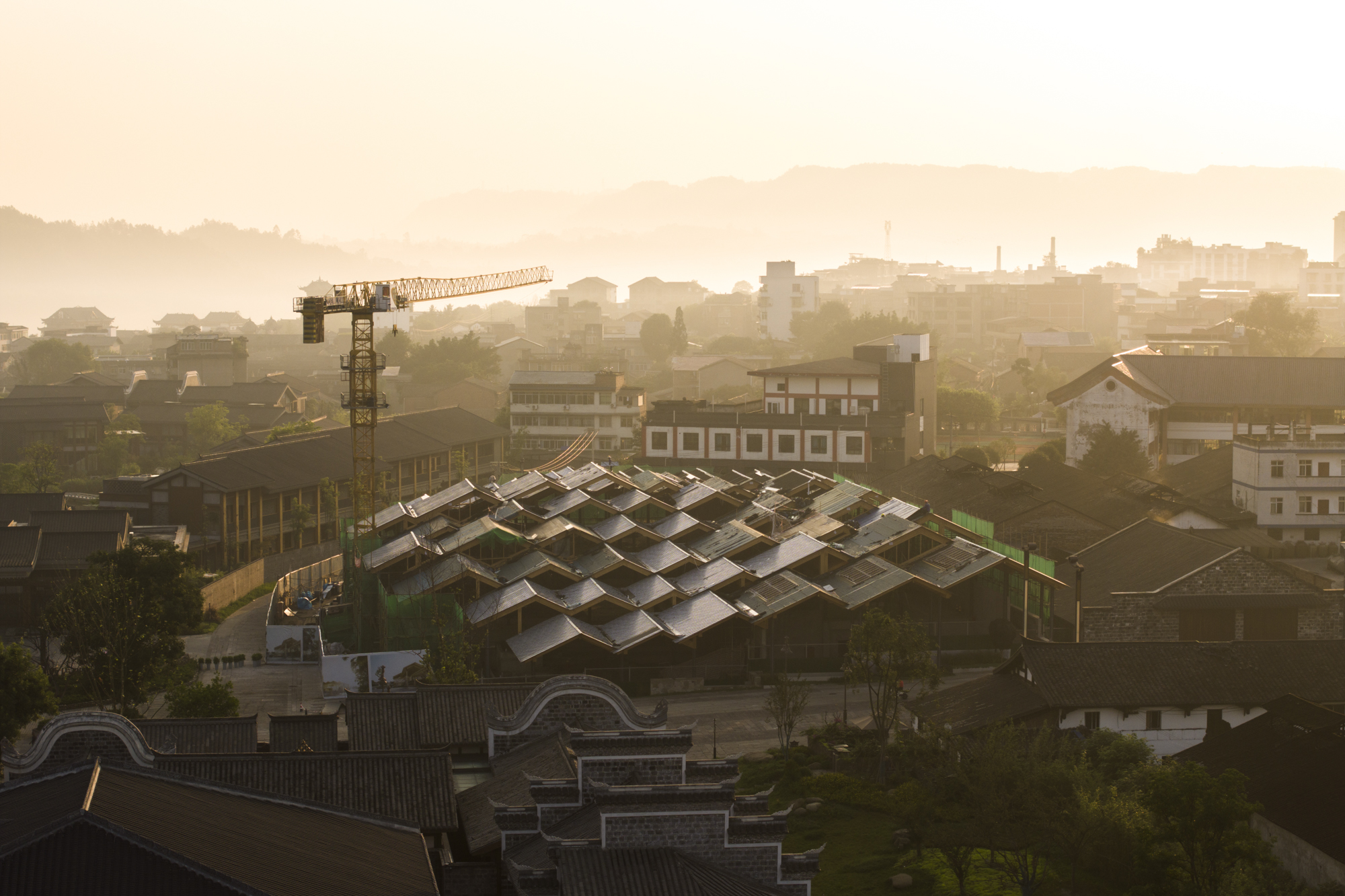二〇二〇年中,我们受邀来想象位于李庄入口的市民中心的设计。有人说李庄是中国建筑学耶路撒冷,这样一个在古镇入口的地方设计也让我们倍感压力:设计要有深度,但是也需要焕新。地块界于城镇的“新”和“旧”、“内”与“外”、江水与丘陵之间。我们特别恐惧那种寻常古镇入口设施让人一目疲倦的复制感,希望借由市民中心的建设,传达李庄的厚重和创新、传承与开放,传达这里的山、水和人居。
In mid-2020 we were invited to imagine the design of a civic centre at the entrance to Li Zhuang. It has been said that Li Zhuang is the architectural Jerusalem of China, and the design of such a place at the entrance to the old town put us under pressure: the design had to have depth, but it also needed to be new. The site is situated between the 'new' and the 'old' of the town, the 'inside' and the 'outside', the river and the hills. We are particularly afraid of the tired replication of the usual old town entrance facilities, and hope that the construction of the Civic Centre will convey the richness and innovation of Li Zhuang, its heritage and openness, its mountains, water and habitat.
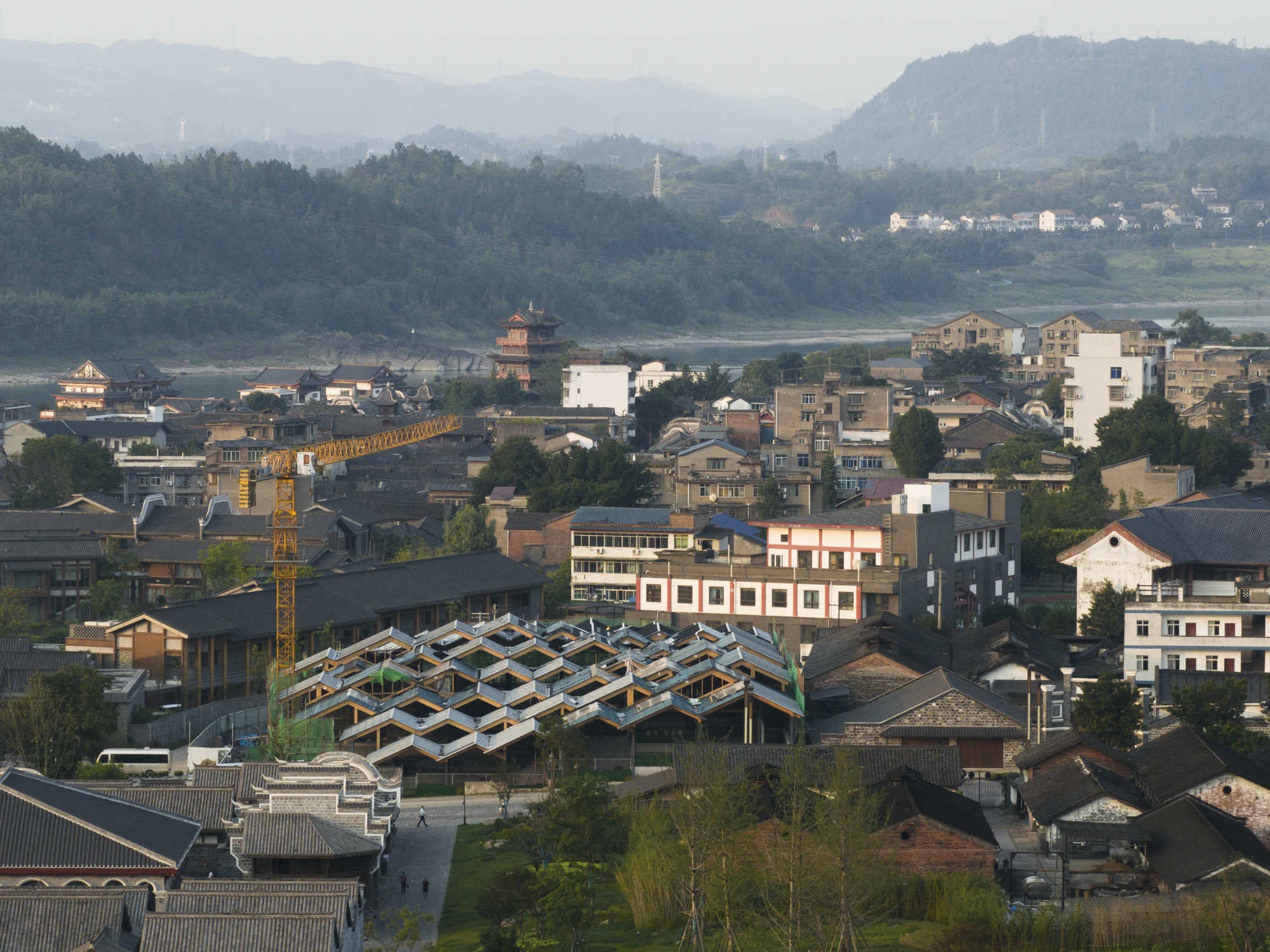 |
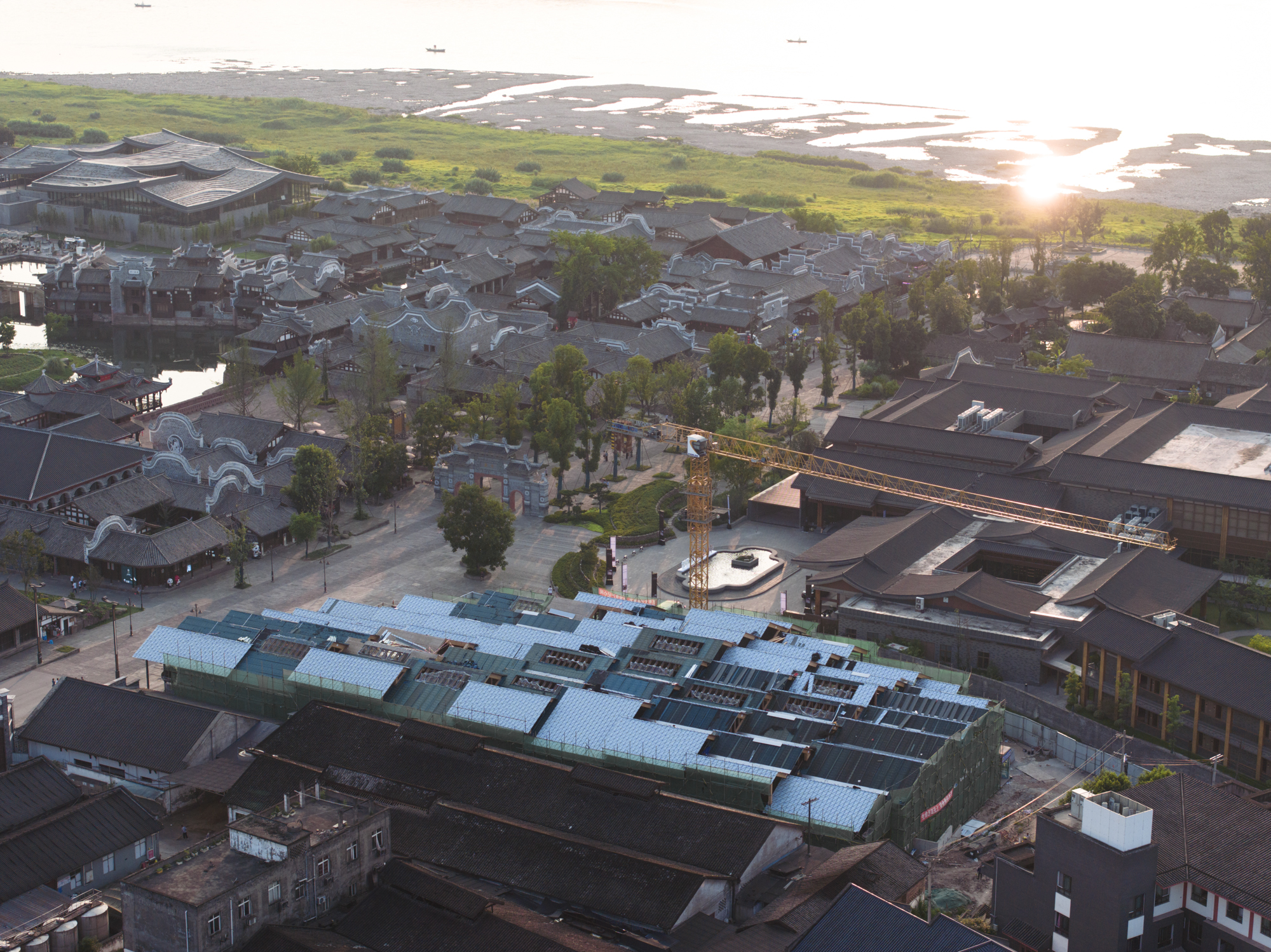 |
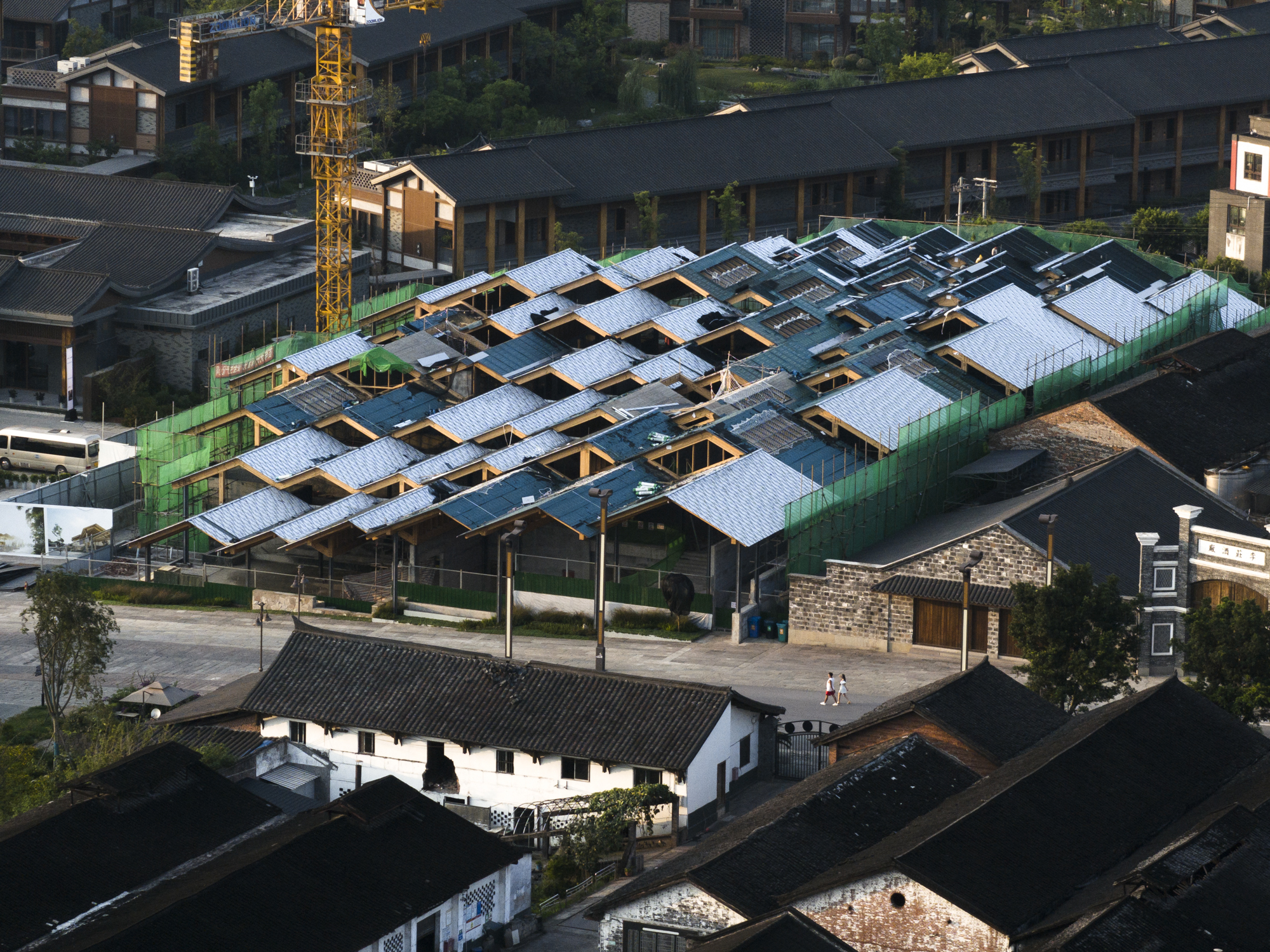 |
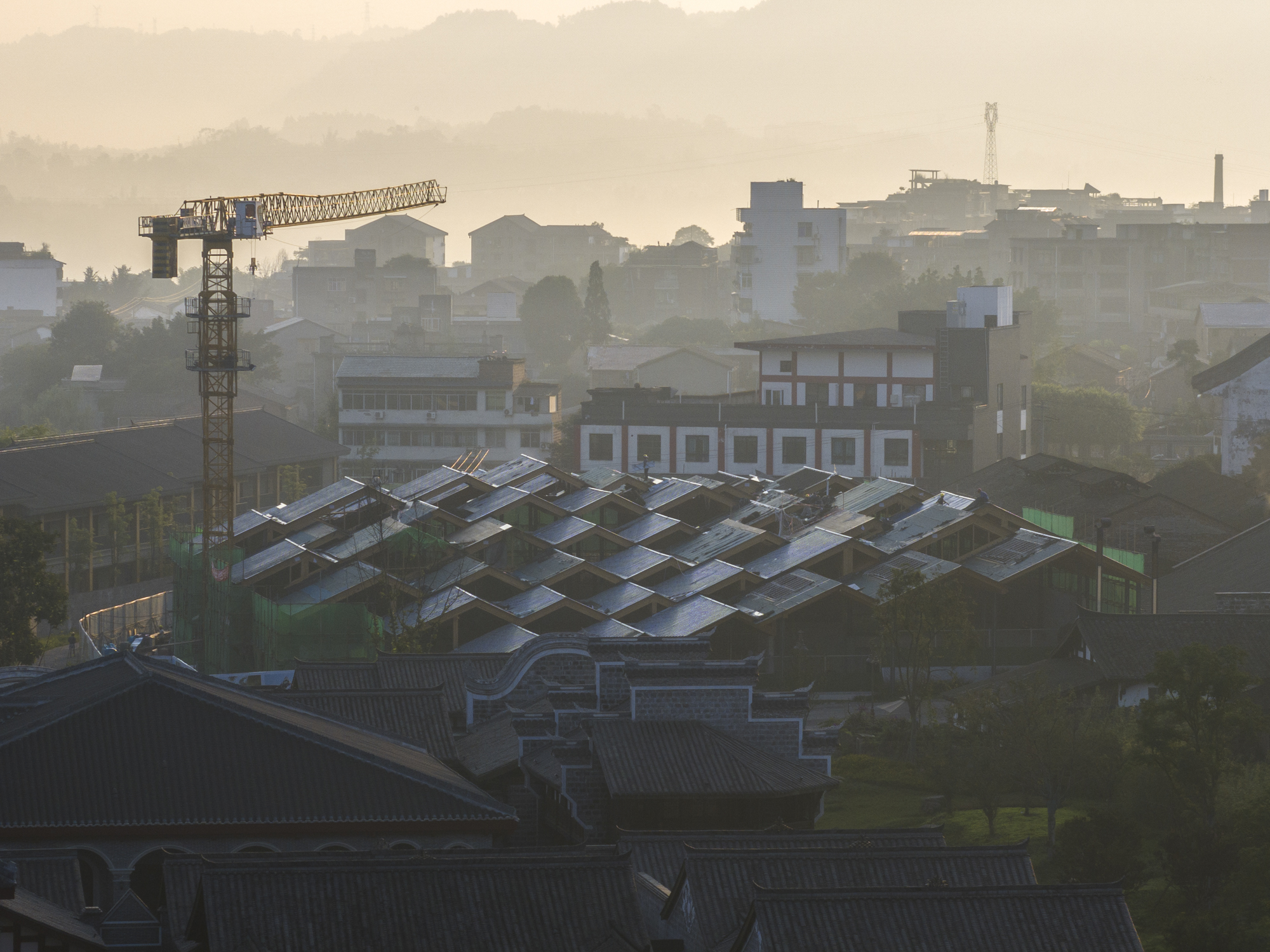 |
在古镇中行走常常伴随的是不断的发现,青石、砖墙、台阶和物件,人文的肌理和时间的沉淀。古镇是一个开放的空间,我们可以自由地进入,而所有都发生在不断绵延的屋檐之下,天空的剪影是我们在其中观察自然的窗口。这是特别中国的一种状态,人和自然不是对立,不分内外,无论彼此,共生的状态。我们特别钟爱这种状态,希望能用现代建筑的语言来诠释它。
Walking through the old town is often accompanied by a constant discovery of the green stones, brick walls, steps and objects, the texture of humanity and the sedimentation of time. The old town is an open space that we can enter freely, and it all happens under the ever-extending eaves, the silhouette of the sky being the window through which we observe nature. This is a particularly Chinese state, where man and nature are not in opposition, not inside or outside, but in symbiosis with each other. We are particularly fond of this state and hope to interpret it in the language of modern architecture.
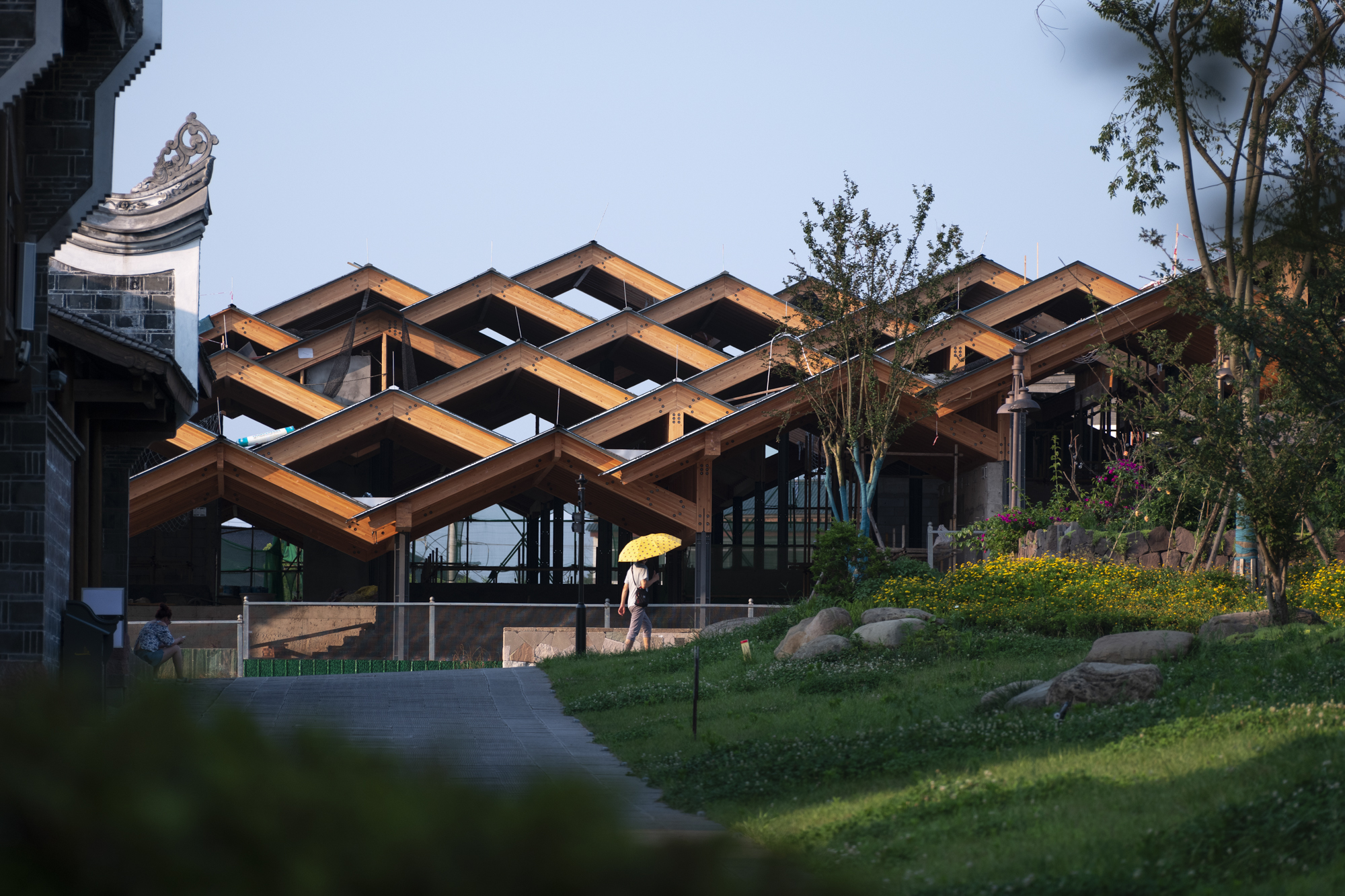
利用场地变化的高差,我们再造了一个古镇空间的片段,在这个片段的序列里,我们尝试还原街道、里弄还有广场,仿佛古镇肌理的延伸,有达到、有探索、有发现、也有停留。这个空间样本,以一个看似无序的形态展开,而在其之上覆盖另外一个极为工整的建构:一个由重叠的屋顶形成的小山丘。小丘是山水的意象,下部是无缝连接古镇公共空间的生活场。无序与有序,两者相遇形成意外又熟悉的空间状态,同时又和建筑外的空间形成有趣的互动,自然的形成一种整体。
In this sequence of fragments, we have tried to restore the streets, lanes and squares, as if they were extensions of the ancient town's fabric, with reaching, exploring, discovering and staying. This spatial sample unfolds in a seemingly disorderly form, overlaid by another extremely neat construction: a hill formed by overlapping roofs. The hill is the imagery of the landscape and the lower part is the living field that seamlessly connects the public spaces of the old town. Disorder and order meet to form an unexpected yet familiar spatial state, while at the same time forming an interesting interaction with the space outside the building, naturally forming a whole.
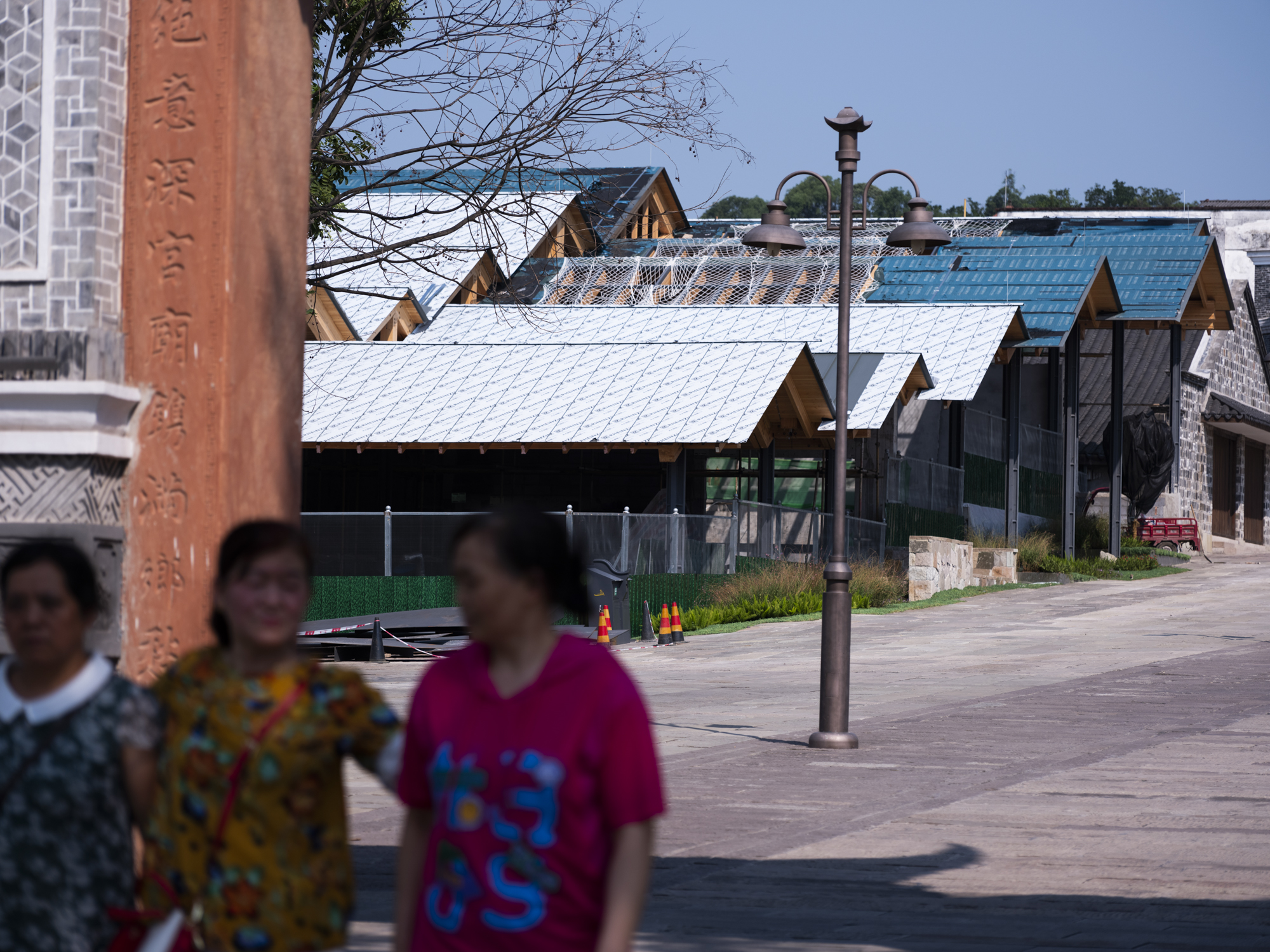 |
 |
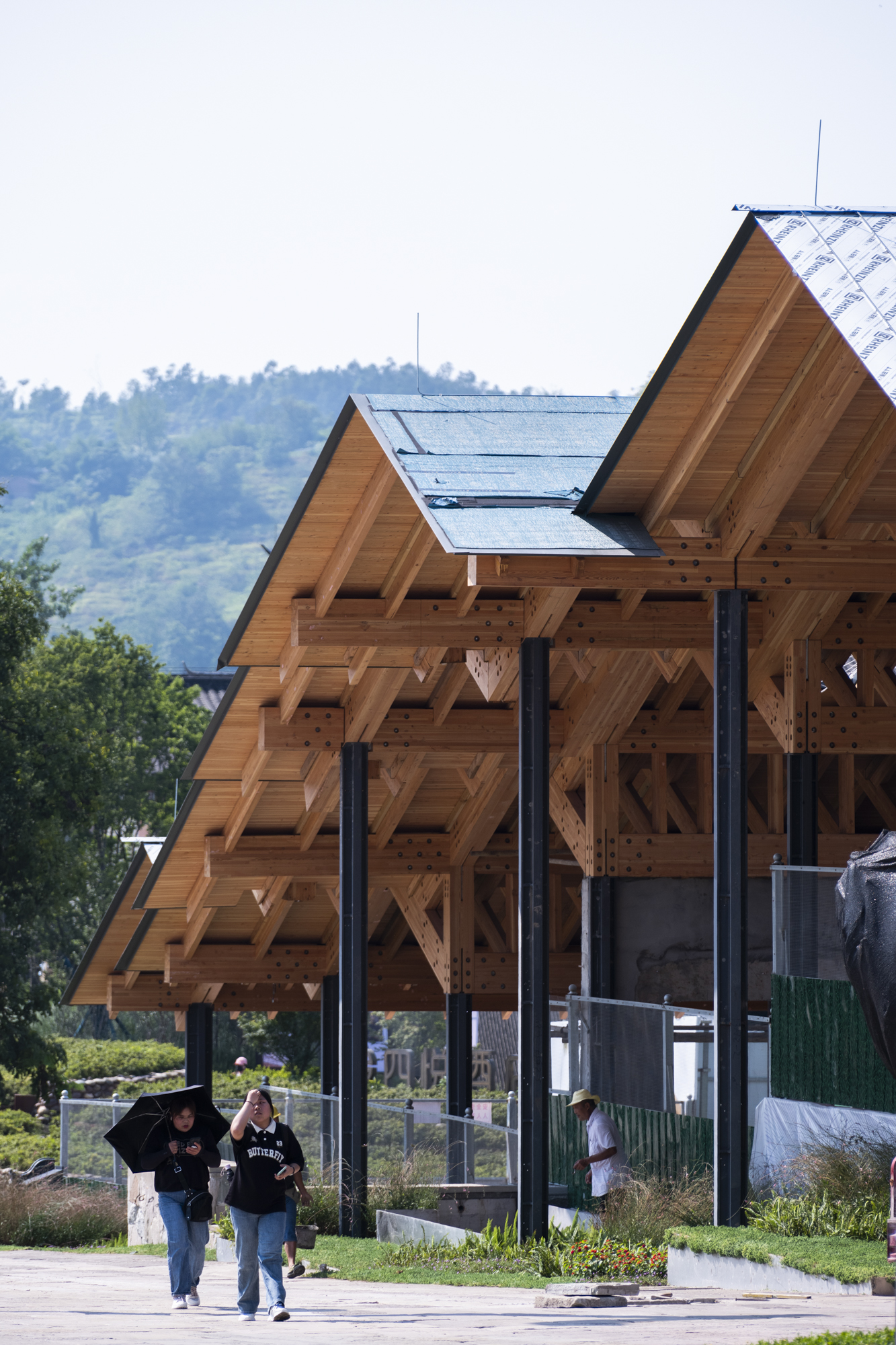 |
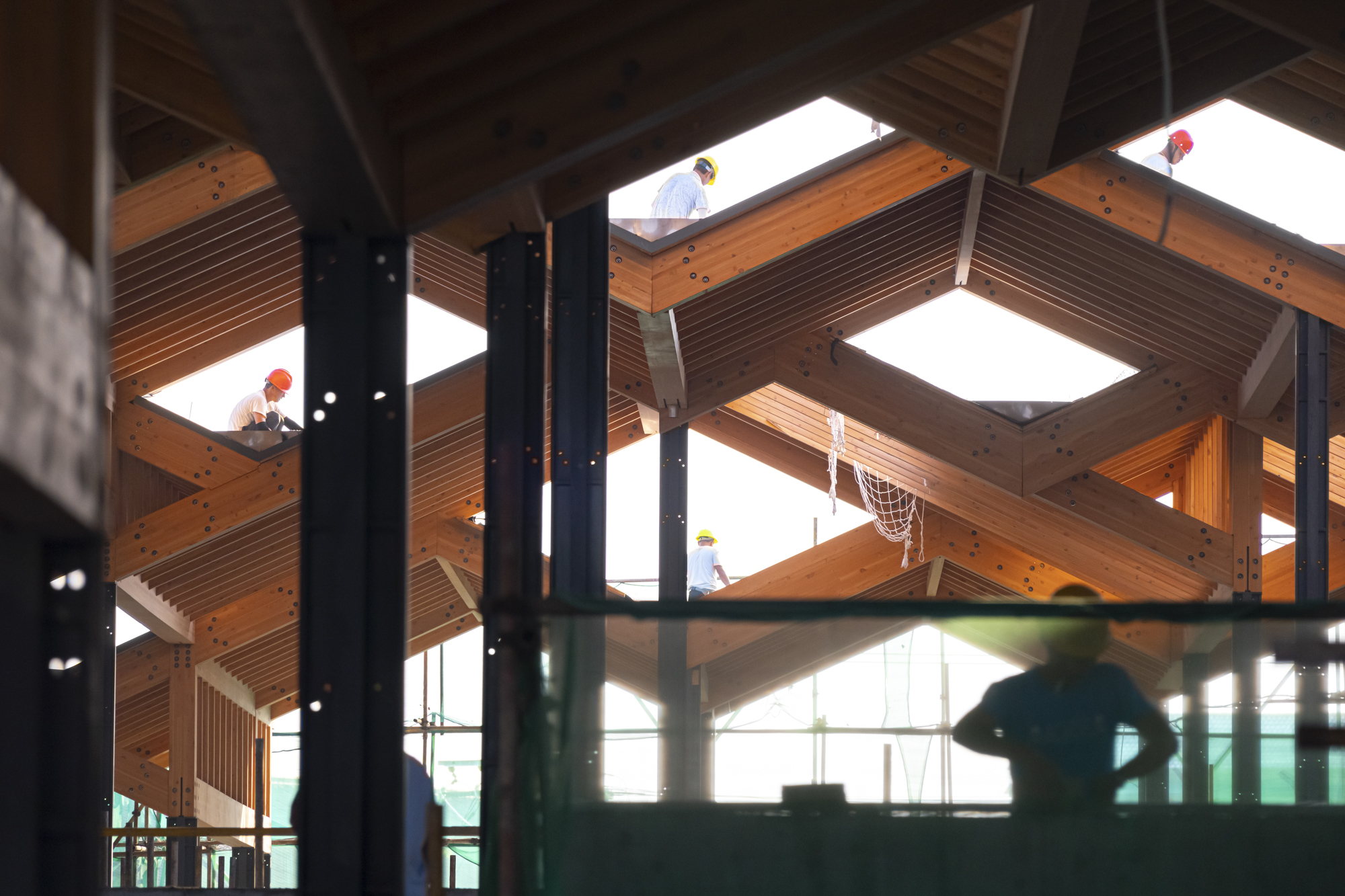 |
 |
重叠的屋顶有着传统民居的尺度,在其下却需要容纳当代更变化的需求。我们坚持采用现代木结构来完成整个屋顶的建造。松木的质感用最直接的方式传达建筑空间和结构的意图:结构即空间,不再有包裹和多余的装饰,建筑旨在界定序列和场域。
The overlapping roofs have the scale of traditional dwellings, but underneath they need to accommodate the changing needs of the contemporary. We insisted on a modern timber structure for the entire roof. The texture of the pine wood conveys the intention of the building's space and structure in the most direct way possible: structure as space, no more wrapping and superfluous decoration, the building aims to define sequence and field.
 |
为了达到这个目的,我们全程采用三维的方式来帮助我们推演空间的变化,同时提供给结构工程师可以使用的空间和形式。因为木结构之外再没有遮盖物,就需要对建造更有敬畏之心而异常仔细的工作,大到梁、檩、椽,小到连接的螺栓销钉都需要仔细的核对。而这些辛苦的工作也得以让我们异常欣喜的回报:空间的营造不光完全和我们设想的一样,更屡屡出现意外的惊喜。刚完成主梁和檩条铺设之时,正反弯折的结构形成异常规整的变化,宛如宋代画家马远的《水图》。在小丘之下是水,是我们之前意料之外的,然而这种结构自然形成的建构之美却在真正我们身临其境时很强烈的传达给到访的人。 To achieve this, a three-dimensional approach is used throughout to help us project the changes in space, while providing the structural engineers with spaces and forms they can use. Because there is no more cover beyond the timber structure, it requires a more reverent and exceptionally careful approach to construction, from the large beams, purlins and rafters to the smallest bolts and pins of the connections. And this hard work was rewarded with great pleasure: the space was not only created exactly as we had envisaged, but also with many unexpected surprises. When the main beams and purlins were first laid, the structure was bent and curved in an unusually regular way, just like the Song dynasty painter Ma Yuan's 'Water Picture'. Underneath the knoll was water, which we had not expected, but the natural beauty of the structure was strongly conveyed to those who visited when we were actually there. 整个的过程,无论是我们还是施工的同事都尽力采用当地出产的自然的材料,容纳色差并给材料留出更大的空间冗余,效果却让人惊喜。屋檐下的建筑和景观仿佛从土里生长而出,似乎都有了等待时间更多沉淀从而慢慢变成周遭的觉悟。 Throughout the process, both we and our construction colleagues tried to use locally sourced and natural materials, accommodating colour differences and allowing for greater redundancy in materials, but the results were surprising. The buildings and landscapes under the eaves seem to grow out of the earth and seem to have the awareness of waiting for time to settle more and slowly become the surroundings. |
|||
